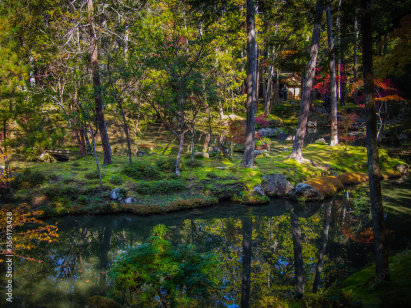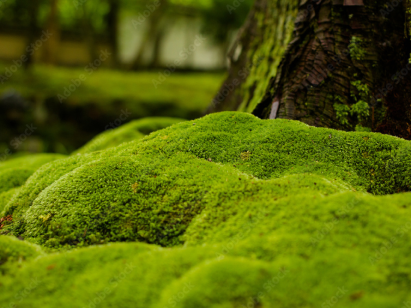A Zen Garden Loved by Steve Jobs
Updated on Jan12, 2021・8 min read
Share

Articles / A Zen Garden Loved by Steve Jobs
What is a Zen Garden?
Most, if not all, zen temples in Japan have a garden. In Japanese these gardens are called karesansui, which means “dry landscape garden”.
Zen gardens represent all things in nature using rocks, sand, moss, and other elements.
Their simple beauty is said to have been appreciated by Steve Jobs, co-founder of Apple.
Jobs described the gardens around Kyoto as “the most sublime thing [he has] ever seen.”,
and thought of these gardens as the ultimate demonstration of simplicity and the art of subtraction.
Is a Zen garden merely something to be looked at and enjoyed?
Zen gardens can be enjoyed by many people because of their simple structure and various modes of expression.
What else can one appreciate when viewing these gardens?
Can you see the beautiful patterns on the white sand?
A long time ago, Zen monks would draw these sand patterns every morning as part of their samu, or “zen practice”.
As it was very difficult to draw a straight line, it was one of the practices that promoted focus and a state of mind without distractions.
It is also said that the zen garden expresses a quiet and pure world; a place that connects this world and the next.
Meditating in front of the garden was also a practice to imagine a pure afterlife.
What do you experience when you see a zen garden?
You can meditate quietly in front of the garden.
You may recall your ancestors.
You can imagine what the monks were thinking when they drew the lines on the white sand.
You can also just enjoy looking at the patterns.

What do I need to know to appreciate a zen garden?
Zen gardens have various precepts, and the seemingly random arrangement of the stones is also imbued with significance.
Have you ever seen the garden at Ryoanji Temple?
The zen garden at Ryoanji is extremely simple, with only white gravel and 15 stones.
However, there is a deeper meaning behind its simple appearance.
One aspect is the number 15.
In Japan, odd numbers have long been believed to be auspicious, especially numbers 3, 5 and 7 – which is why pagodas have an odd number of floors.
So in this garden, the 15 rocks are divided into groups of 3, 5 and 7.
According to one story, all 15 stones can never be seen at the same time from any angle, and this is said to express the imperfection of the world.
In other zen gardens you may see two stones arranged around a larger third stone in the middle. This is called sanzonseki, which represents the Buddhist triad.
Being aware of these various precepts will help you get more from viewing a zen garden.
However, as the abbot of one temple says:
"How you interpret what you see depends on the viewer.”
Please enjoy zen gardens with a free mind without worrying too much about rules.
A zen garden can embrace all of our disparate interpretations and feelings.
How does it look to your eyes?




